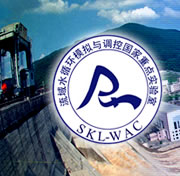《International Journal of Geomechanics》刊登了“加筋挡土墙的地震响应特征和回填土的应变软化”
作者:Huabei Liu,Hoe I. Ling, M.ASCE
刊物:《International Journal of Geomechanics》,12卷第4期,351-356页
关键词:土工织物加筋挡土墙;地震;应变软化;永久位移;加固荷载
摘要:考虑到大部分的加筋挡土墙回填的是具有明显应变软化性的压实颗粒土,可以预料如果地震引起的变形很大,墙顶上松动的土体会影响加筋挡土墙结构的响应。如果加筋挡土墙结构是基于永久位移来抵抗地震荷载而设计的,那么该结构的设计将十分重要。本研究利用一个校准过的有限元程序研究回填土的应变软化对包面加筋挡土墙的变形和加固荷载的影响。采用受到过0.1到0.6g正弦激励的丰浦密沙,中密的日本淤泥和松的富士河沙作为加筋挡土墙模型的土料。通过这个研究可知,如果这个加筋挡土墙足够深,那么其永久变形就主要受回填土的压实度,剪切变形分布,沿着滑裂面的剪切变形,挡土的自由位移的影响。滑裂面仅与土体峰值强度相关,最大的加固荷载直接与回填土的应变软化相关。当土体的峰值强度较大而残余强度较小时在强地震中能导致较大的加固荷载。这个结论表明,如果这个加筋挡土墙结构是依据很强的地震设计的,那么用滑裂面的残余强度确定峰值强度可能是合适的。
Seismic Responses of Reinforced Soil Retaining Walls and the Strain Softening of Backfill Soils
Author: Huabei Liu, Hoe I. Ling
Journal: International Journal of Geomechanics,Volumes 12,Number 4,351-356
Key word: Geosynthetic-reinforced soil walls;Earthquake; strain-softening; Permanent displacement;Reinforcement loads
Abstract: Considering that most geosynthetic-reinforced soil structures (GRS) are backfilled with well-compacted granular soils exhibiting evident strain-softening, it is expected that the mobilized soil strength beyond the peak would affect the response of GRS structures if the earthquake-induced deformation is large. This issue is particularly relevant if GRS structures are to be designed against seismic loading based on permanent displacement. In this study, a calibrated finite-element procedure was used to investigate the influences of strain softening of backfill soils on the deformation and reinforcement load of wrapped-face GRS walls. Dense Toyoura sand, a medium dense Japanese silty sand, and loose Fuji River sand were used as backfills of model GRS walls, which were subjected to sinusoidal excitation ranging from 0.1 to 0.6g . From the study, it is found that the permanent deformation of GRS walls was attributed to the compaction of backfill, smeared shear deformation of soil, shear deformation along slip surfaces, and free-field displacement in the retained earth if it was adequately deep. The slip surfaces were related only to the peak soil strength. The maximum reinforcement load was directly related to the strain softening of backfill soil. Soils with larger peak strength but smaller residual strength could result in larger reinforcement load in strong earthquakes. The results imply that using residual strength along the slip surface determined from peak strength may be more appropriate if GRS structures are to be designed against rare-event strong earthquake loading.
原文链接:http://ascelibrary.org/doi/abs/10.1061/%28ASCE%29GM.1943-5622.0000051
翻译:王丽娟;审核:安鹏

